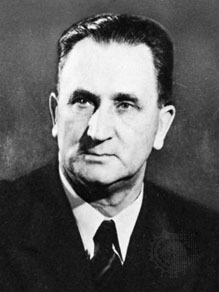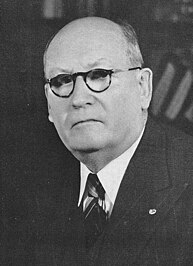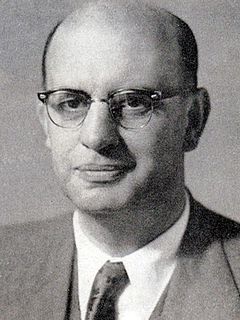 W
W W
W W
WThe Cabinet of South Africa is the most senior level of the executive branch of the Government of South Africa. It is made up of the President, the Deputy President, and the Ministers.
 W
WFollowing the assassination of Prime Minister Dr. Hendrik Verwoerd in parliament on 6 September 1966, Adv. B.J. Vorster became the next Prime Minister of South Africa. He appointed members of the National Party to the following positions in his first Cabinet:
 W
WOn 15 February 2018, Cyril Ramaphosa was inaugurated as the President of the Republic of South Africa to serve out the remainder of Jacob Zuma's term in office following Zuma's resignation the previous day. Shortly after, on 26 February 2018, he announced his new cabinet. The President announced a cabinet reshuffle on 22 November 2018, following the death of Minister Edna Molewa and the resignation of Malusi Gigaba. There were a total of 33 ministerial portfolios in the cabinet.
 W
WThe National Party under D.F. Malan was elected by a majority of seats, but a minority of votes, in the 1948 South African general election.
 W
W W
WThe First Cabinet of J.B.M. Hertzog was the executive power in South Africa from June 1924 to June 1929. It was also known as the pact government, due to the inclusion of at least two members of the Labour Party in a coalition.
 W
WFollowing his election as president, Jacob Zuma announced his first Cabinet on 10 May 2009. There were a total of 34 ministerial portfolios in the cabinet.
 W
WGen. Jan Smuts became Prime Minister, after Louis Botha's death in September 1919. In the general election of 1920, with 134 seats elected to the lower house, the South African Party led by Jan Smuts was ahead by three seats against the National Party. Both parties then found themselves forced to form alliances with third parties to form the new government. The South African Party was quick to form an alliance with the pro-British Unionist Party and Jan Smuts was reappointed prime minister. Shortly after in the same year, the Unionists agreed to join the South African Party and early general elections were held in February 1921.
 W
W W
WWhen P.W. Botha first became Prime Minister of South Africa in 1981, he appointed members of the National Party to positions in his first Cabinet.
 W
W W
W W
WThe presidency of Nelson Mandela began on 10 May 1994, when Nelson Mandela, an anti-apartheid activist, lawyer, and former political prisoner, was inaugurated as President of South Africa, and ended on 14 June 1999. He was the first non-White head of state in South African history, as well as the first to take office following the dismantling of the apartheid system and the introduction of full, multiracial democracy. Mandela was also the oldest head of state in South Africa's history, taking office at the age of seventy-five. His age was taken into consideration as part of his decision to not seek re-election in 1999.
 W
WThe Presidency of Thabo Mbeki began on 14 June 1999, when Thabo Mbeki became the second President of South Africa. Mbeki, an African National Congress member who had previously been the Deputy President of South Africa, defeated Democratic Alliance president, Tony Leon in the South African general election, 1999. Mbeki's running mate Jacob Zuma became the Deputy President that same day.
 W
W W
WThe Second Cabinet of Cyril Ramaphosa was formed on 29 May 2019 after President Ramaphosa was inaugurated for his first full-term as President of South Africa following the African National Congress's victory in the 2019 South African general election. The cabinet was slightly reduced from 36 portfolios to only 28 portfolios due to the amalgamation of several departments. The cabinet is the third cabinet in Africa to be made completely gender-equal in its composition and the first gender-equal cabinet in South African history.
 W
W W
W W
W W
WOn 24 May 2014, Jacob Zuma was inaugurated as the President of the Republic of South Africa for his second term in office. Shortly after, on 25 May 2014, he announced his new cabinet. While some ministers from the previous cabinet retained their posts, most of the cabinet was made up of either new appointments or previous cabinet ministers shifted to new portfolios. There were a total of 35 ministerial portfolios in the cabinet. Zuma subsequently reshuffled the cabinet on several occasions during his second term in office, including a major reshuffle on 30 March 2017.
 W
W W
W W
W W
WThe 7th Cabinet of the Union of South Africa, the 3rd formed by General J. B. M. Hertzog, was in power from 17 May 1933 to 18 May 1938.
 W
W W
WThe Union Buildings form the official seat of the South African Government and also house the offices of the President of South Africa. The imposing buildings are located in Pretoria, atop Meintjieskop at the northern end of Arcadia, close to historic Church Square and the Voortrekker Monument. The large gardens of the Buildings are nestled between Government Avenue, Vermeulen Street East, Church Street, the R104 and Blackwood Street. Fairview Avenue is a closed road where only officials can enter to the Union Buildings. Though not in the centre of Pretoria, the Union Buildings occupy the highest point of Pretoria, and constitute a South African national heritage site.